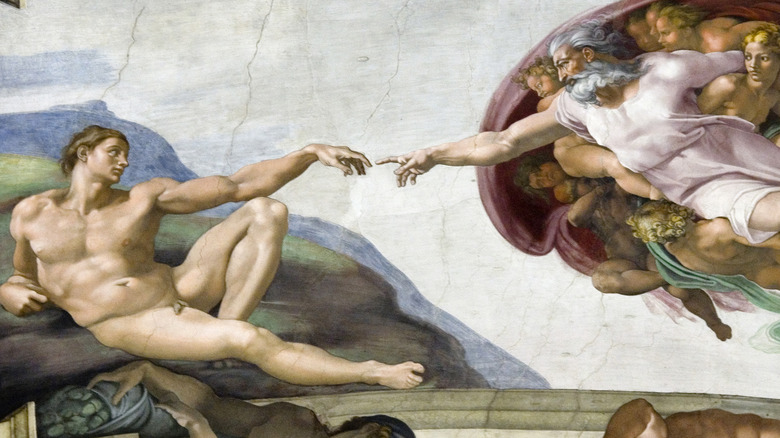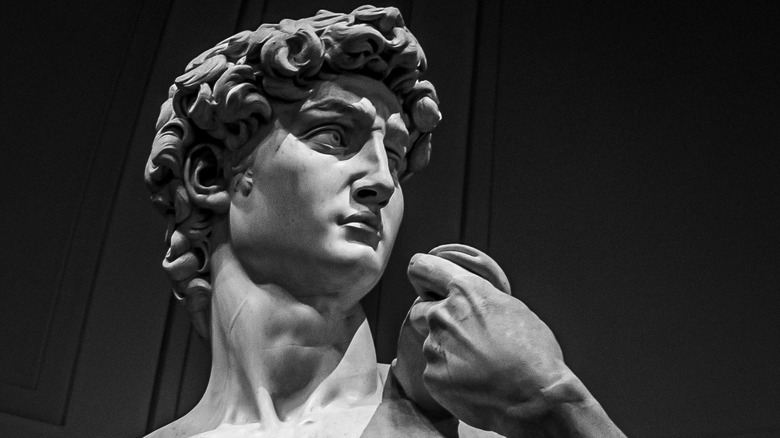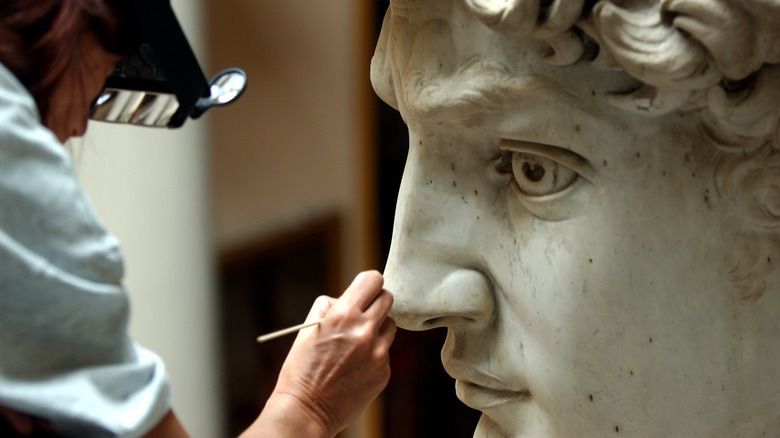The Truth About Michelangelo's Relationship With The Pope
Michelangelo is the most celebrated artist of his time. Two biographies of the sculptor, painter, and architect came out during or just after his lifetime. The 20th century saw a major movie created about his life. "The Agony and the Ecstasy" (1965), based on the novel by Irving Stone, pitted Charlton Heston as the stubborn, passionate artist against his proud, equally fiery sponsor, Pope Julius II, played by Rex Harrison. Julius hired Michelangelo for a number of major projects in Rome, including Julius' own elaborate tomb, as well as the celebrated Sistine Chapel. The movie was right: The two men fought about everything.
Their relationship was complicated. Art historian Kenneth Clark put it neatly in his famous BBC series "Civilisation" (posted on YouTube): "Heroes do not easily tolerate the company of other heroes."
Both men were larger than life. Julius, called the Warrior Pope for leading troops in war, had firm ideas about what he wanted from the artists he hired (via Britannica). But even the fierce old soldier had to admit that Michelangelo was "un uomo terribile" — a terrible man, meaning fearsome, proud, and hard to get along with. (Michelangelo's relationship with another great Tuscan, Leonardo Da Vinci, was even worse, for similar reasons.)
After near-endless arguments, Michelangelo was paid 10,000 ducats to design and carve statues for Julius' tomb, including the famous Moses. The two men needed each other as much as they frustrated each other. Only Michelangelo, and a few other geniuses, could create the kind of magnificent art that Julius demanded; only Julius had the money and the patience to let Michelangelo create his masterpieces.
Was there more to the relationship?
On the internet, people have speculated about the complicated relationship between these two men. Some sites, like Out Adventures, have claimed that the two men were lovers.
It's true that Michelangelo was very likely attracted to men (per the Met Museum). His art celebrated the beauty of the nude male body, and when he was 57 years old he seems to have fallen deeply in love with his friend, the 17-year-old Roman nobleman Tommaso de' Cavalieri. He expressed his love to young Tommaso in sonnets and in drawings, including a famous drawing of the archetypal boy-as-sex-object, Ganymede.
However, as the Met Museum points out, Michelangelo worked in a period when artist's models were almost exclusively young men, as it was considered scandalous for women to disrobe in front of strangers. He also grew up in a philosophical milieu that celebrated chaste male love, in the tradition of Plato, and considered women to be imperfect versions of men, in the tradition of Aristotle.
A man of passion and faith
Michelangelo's primary concern was always spiritual, and his muscular nudes represent ideas as much or more than physical passions. Michelangelo was a devout Catholic who believed that sex outside of marriage, with men or women, was sinful. He never married, and told his colleagues that his long life and good health were due to rigorous celibacy.
As for Julius, his Protestant enemies accused him of sodomy, but this was a fairly common smear at the time (via Queers in History). He is known to have fathered at least one child, despite his promise of celibacy when he was ordained. It's also worth noting that Michelangelo, and especially the older Julius, were mature men. Homosexual tastes of the time tended towards youths or adolescents, as they did in classical antiquity (per The Warwick Research Journal).
So were these two heroes of the Renaissance more than professional partners? Without a time machine we'll never know for sure, but consider it highly unlikely.


